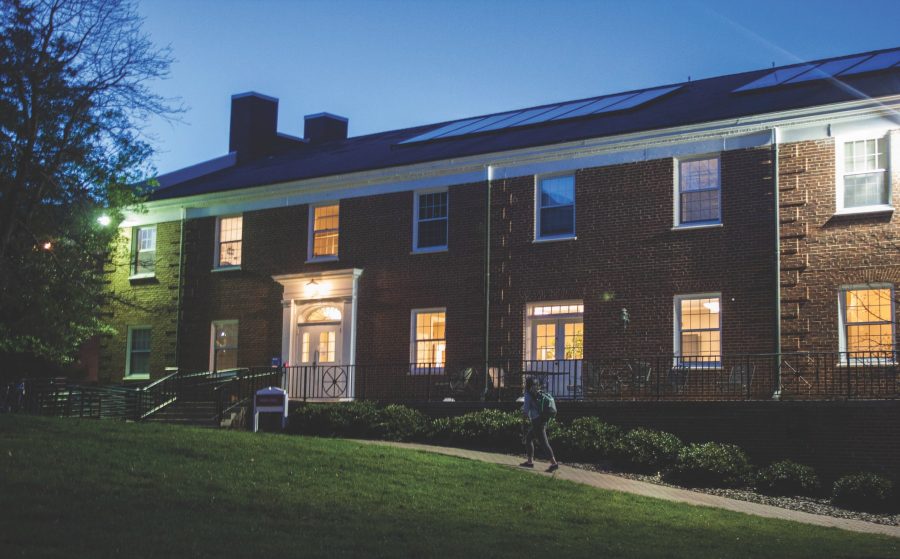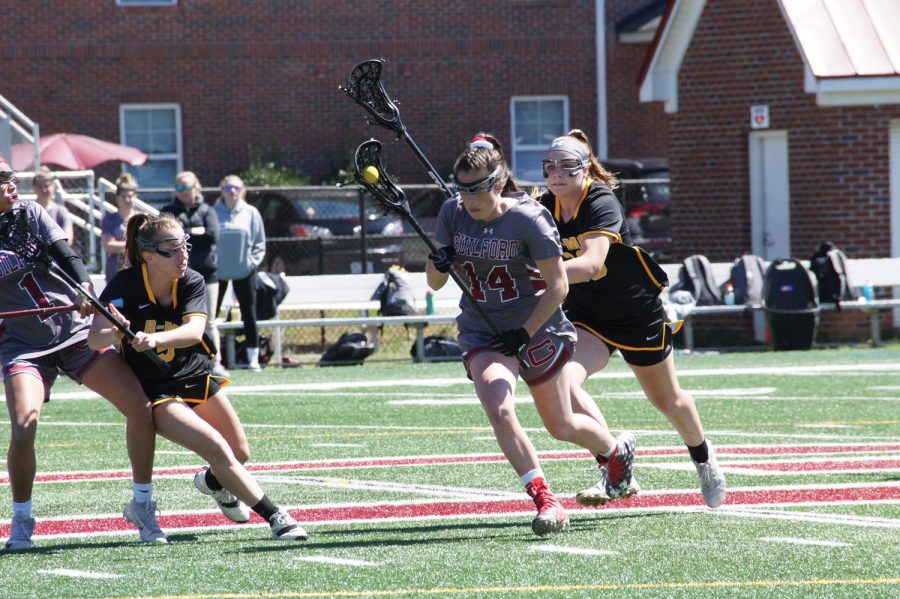Guilford College emphasizes understanding and accommodation for all kinds of students from all kinds of circumstances. This has, over the past few years, come to include students with disabilities more than ever before. Though there is still much work to be done, Guilford is currently doing a lot to make itself an accessible campus.
Guilford is a small campus. Though many people without disabilities don’t think about this, the size of the college actually makes it ideal for students with mobility issues.
The amount of time it takes to get from one building to another differs from person to person, and for many people with mobility issues, it can take considerably longer compared to others. When a person’s classes are back-to-back, this can become a problem on many large campuses.
Here at Guilford, though, the longest distance someone has to go for classes is from the Frank Family Science Center to Dana Auditorium, still a relatively short distance. Though taking that trek in just 15 minutes is difficult for some students with mobility issues, much less distance between classes is the norm.
There is still work to do. An example of what is currently preventing accessibility on the Guilford campus is the lack of elevator access for a number of buildings. Archdale Hall, which houses many instructor offices, lacks an elevator, limiting students with mobility issues from meeting with instructors on the second floor without making a prior appointment. Dorm halls also lack elevators, which is even more limiting.
“I feel like the social aspect of campus is very limited to me,” said Kate Mitchell, a senior living in Mary Hobbs Hall who uses an electric wheelchair. “In all the dorms, I can only go to the first floor.”
In buildings that do have elevators, there are still issues with no easy solution.
“The elevators need to be bigger in my opinion,” said junior Hannah Hughes who uses a mobility scooter that barely fits into the elevator in Duke Hall. “There needs to be more room.”
At the end of the day, renovating elevators and installing them in buildings that don’t have them is a financial issue. Although more and better elevators would undeniably be a good thing, it’s hard for a small college to gather the necessary funds.
So instead of focusing on an issue that they can’t afford, the Disability Resources Department is putting money into automating more doors on campus.
“That’s really our big project right now: working with facilities, working on getting door openers on the buildings,” said Melissa Daniel, director of the Learning Commons. “It’s difficult because each one is so expensive.”
In the end, the most important endeavor might center on making sure that the wider Guilford community knows that accessibility is a serious issue, both on campus and in the rest of the world. Guilford is certainly lacking these kinds of conversations.
“People just don’t really think about (accessibility issues),” said junior Logan Wilson. “Guilford is receptive to it, I believe, but sometimes they have to be prompted.”
If we as a community are prompted, and continue to prompt each other to be aware of accessibility, we can continue to do a great deal to help improve the Guilford campus for all students.
“It’s really a community initiative,” said Daniel. “I know my responsibility as a community member is to help.”
When asked what that help means, Daniel offered this advice:
“Call attention to things that are not accessible, and help be part of fixing it.”










